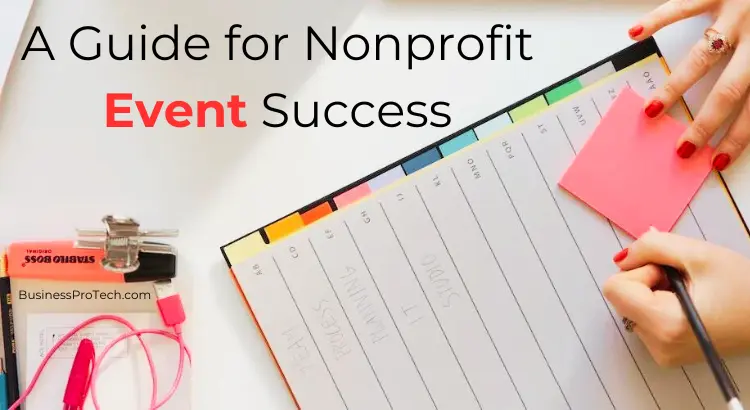Organizing an event for a nonprofit can feel like sailing in a storm with a small boat. The balance between creating an impactful event and managing costs can be challenging. However, with strategic planning and clever resource use, charting a course to success is possible. This guide offers practical advice. It will help your nonprofit maximize impact, even with limited resources.

Understanding Your Resources
Before diving into planning, gaining a clear understanding of your available assets is crucial. Compile a thorough inventory of what you have, who you know, and the resources your community can offer. Whether it’s volunteer talent or local businesses willing to donate, every contribution counts.
Event Registration Made Easy
One key to a successful nonprofit event is efficient registration. An effective event registration platform can streamline the process. It makes it easier for attendees to sign up and stay inform. This can save you invaluable administrative time and improve the overall attendee experience.
Maximizing Digital Engagement
Your online presence can be your most economical megaphone in today’s digital world. Utilize free or low-cost digital tools to promote your event, engage supporters, and create buzz. From social media calls to action to email marketing, the potential for outreach is immense.

Measurement and Impact Assessment
- Identify measurable goals for your event.
- Track your progress and adjust strategies as needed.
- After the event, review outcomes to understand what worked.
These steps can help you appreciate your event’s impact and provide insight for future planning. Remember, it doesn’t have to be perfect; it simply needs to meet your goals to succeed.
Leveraging Community Networks
Relationships are the currency of effective nonprofit events. Harness the power of your connections, and don’t be afraid to reach out to new ones. Collaboration can lead to sponsorship, in-kind donations, and valuable partnerships. It can significantly expand your resource pool.
Emphasizing Storytelling
In nonprofit events, storytelling is a powerful tool for connection and inspiration. When planning your event, highlight the stories of individuals or communities. Show how your organization’s work has positively impacted them. You can weave these narratives through your marketing materials, speeches, and even the event’s theme. This creates a cohesive and compelling message that resonates with donors and volunteers.
Creative Budgeting and Fundraising
When funds are sparse, every dollar has to work hard. Construct a budget that prioritizes costs with the highest return on investment. Consider innovative fundraising strategies. They can boost your budget and drum up excitement for your event.

Accessibility and Inclusion
When planning an event, it’s important to make sure that everyone can participate. This means considering things like making the venue accessible for people with disabilities. It also means providing translation services and having a diverse group of presenters and attendees. Hosting an inclusive event will help you reach more people. It will also show that your nonprofit is dedicated to serving and engaging with the whole community.
Volunteer Powerhouse
A nonprofit’s volunteers are not just helpers but the backbone of many successful events. Optimize your volunteer management to ensure you harness their skills effectively. Remember, a well-organized team of volunteers can substitute for a host of paid resources.
Post-Event Engagement
The end of your event means something other than the end of engagement with participants. Follow up with attendees, sponsors, and volunteers to thank them for their contributions and to gather feedback. Use this opportunity to maintain the momentum you’ve built. Nurture your community and lay the groundwork for future events. This continuous loop of engagement helps build lasting relationships. It also creates a supportive network for your nonprofit.
Conclusion
Organizing a nonprofit event on a shoestring budget doesn’t have to limit its success. By understanding your resources and leveraging your community networks, your organization can produce an event that achieves an excellent impact without breaking the bank. Embracing the power of digital engagement will help, too. Reflect on your event’s outcomes as they’re not just a measure of success but stepping stones for future triumphs. Embrace the challenge. Let your event be a testament to what creativity and determination can achieve under limitations.